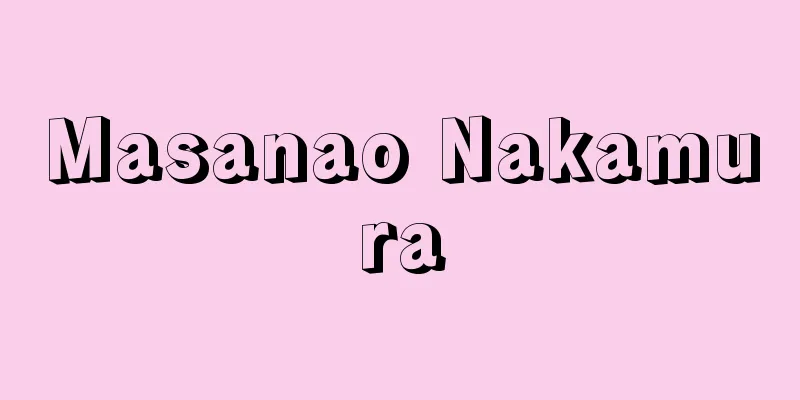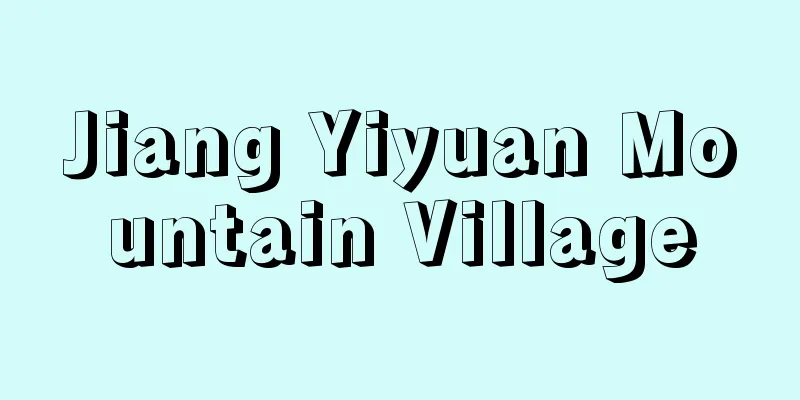Masanao Nakamura

|
Year of death: June 7, 1891 (Meiji 24) Year of birth: Tempo 3.5.26 (1832.6.24) Enlightenment thinker and educator. The eldest son of Nakamura Takebei, a police officer at Nijo Castle. Born in Edo Azabu (near Tanina, Azabu, Minato Ward). His given name was Masanao and his pen name was Keiu. He entered Shoheiko Academy at the age of 16, and after working as a professor, in 1862 he succeeded Sato Issai as a Confucian scholar. He studied day and night so hard that the tatami mat in front of his desk at the Shoheiko Academy dormitory was noticeably sunken. In 1866 he studied in England as a director of the Edo Shogunate's student exchange program, and saw Christianity as the foundation of British politics, society, and economy. After returning to Japan, he translated S. Smiles's The Western History (1871) and J. S. Mill's The Principles of Liberty (1872), making a major contribution to the enlightenment in the early Meiji period. He advocated freedom of Christian missionary work, which was prohibited at the time, and in 1873 (Meiji 6), he contributed to obtaining tacit approval of Christianity from the government. In 1874, he was baptized by Canadian Methodist missionary G. Caclan and actively participated in Christian missionary work. In 1885, he became the principal of Tokyo Women's Normal School, and opened a private school called Dojinsha in Koishikawa, Tokyo, where Christian worship services were held within the school and a women's education course was added. He also devoted himself to educating the blind. In 1889, he became a professor at the University of Tokyo. From around 1892, he leaned towards Unitarian Christianity, and in his later years, he deepened his acquaintances with Buddhists and reached a state of mind in which he wanted to fuse Buddhism and Confucianism. He is a doctor of literature and an imperially appointed member of the House of Peers. <Works> "Keijitsushomon," "Keiyu Nikjo," all 8 volumes, "Keiyu Written Collection," and "Keiyu Shishu" <References> "Nakamura Keiyu" by Takahashi Masao, "Study of Nakamura Keiyu" by Hagiwara Takashi, "Nakamura Keiyu and Christianity" by Koizumi Akira (Koizumi Akira) Source: Asahi Japanese Historical Biography: Asahi Shimbun Publications Inc. About Asahi Japanese Historical Biography |
|
没年:明治24.6.7(1891) 生年:天保3.5.26(1832.6.24) 啓蒙思想家,教育者。二条城交番同心中村武兵衛の長男。江戸麻布(港区麻布狸穴付近)に生まれる。諱 は正直,号は敬宇。16歳で昌平黌に入り,教授方を経て文久2(1862)年佐藤一斎の後を継いで御儒者となった。昌平黌寮で彼の机の前の畳が目立ってくぼんでいたほど,日夜勉学に励んだという。慶応2(1866)年江戸幕府留学生の取締役として英国に留学し,キリスト教が英国の政治,社会,経済の根幹をなしているとみた。帰国後S.スマイルズの『西国立志編』(1871),J.S.ミルの『自由之理』(1872)を訳出し,明治初期の啓蒙に大きく貢献した。当時禁止されていたキリスト教の宣教の自由を主張し,明治6(1873)年キリスト教の黙許を政府から引き出すのに貢献し,7年には自らもカナダのメソジスト派宣教師G.カックランの手で洗礼を受け,キリスト教の宣教に積極的に参加した。8年東京女子師範学校長となり,さらに東京の小石川に私塾同人社を開校し社内でキリスト教の礼拝を行い,また女子教育課程を加えた。また盲人教育にも力を尽くした。14年東大教授。17年頃からユニテリアン派キリスト教へ傾き,晩年には仏教者との交際を深めて仏教と儒教を融合する心境に達した。文学博士,貴族院勅選議員。<著作>『請質所聞』,『敬宇日乗』全8巻,『敬宇文集』『敬宇詩集』<参考文献>高橋昌郎『中村敬宇』,萩原隆『中村敬宇研究』,小泉仰『中村敬宇とキリスト教』 (小泉仰) 出典 朝日日本歴史人物事典:(株)朝日新聞出版朝日日本歴史人物事典について 情報 |
Recommend
Ilig Hahn - Ilig Hahn
…840-1212. Also called the Ilig Khan dynasty. The...
Kety (English spelling)
Indigenous people of the middle and lower reaches ...
Pinus palustris (English spelling) Pinuspalustris
… [Makoto Nishida]. … *Some of the terminology th...
Anthocoridae
…A general term for insects in the Hemiptera fami...
Embezzlement - embezzlement
In the narrow sense, it refers to the crime of ta...
Kastrup Airport - Kastrup Airport
…It is managed by the Schiphol Airport Authority....
Arne Blanc-type Armor - Arne Blanc-type Armor
…the general term for armor and helmets worn by w...
Sekiyama
[1] [noun] ① a mountain with a checkpoint. Also, c...
Family Art - Ienogei
The unique acting techniques, roles, and original...
Yradier, S.
...The Havana version became the danza habanera a...
Sutra - Kyodo
〘Noun〙 Buddhist term. A stone pillar engraved with...
Silchester
...The surrounding area is home to the Barafield ...
Wright, CD (English) WrightCD
...The results showed that the Engel coefficient ...
Gold coin Sarushima district - Kinnozaisarushima district
Kabuki Kyogen. Historical piece. The original work...
Azuma Kunitayu - Azuma Kunitayu
⇒ Tokiwazu Kanetayū (2nd generation) Source: Kodan...









